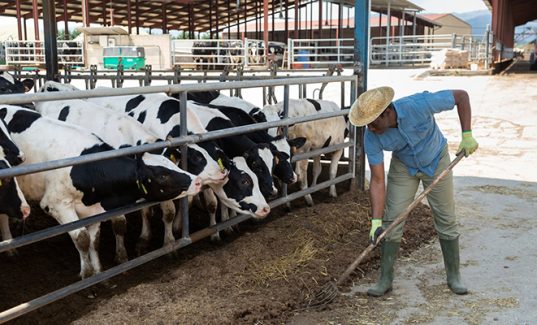The Economics Section at Alberta Agriculture and Forestry conduct the on-going annual survey of dairy enterprises over the course of one year. This survey is called the Dairy Cost Study. This study tracks the cost and returns information on milk production in Alberta. It is a valuable benchmarking tool for dairy producers as well as other dairy industry partners.
“This publication is an annual report outlining the cost of producing milk in Alberta,” says Pauline Van Biert, research analyst, AF. “This latest release is for 2016, based on the collective results of dairy farmers participating on the provincial dairy cost study. Forty five dairy farmers, or almost 10 per cent of dairy farmers in Alberta, provided information on their costs of producing milk for the 2016 study.”
Van Biert says the study contains a lot of interesting numbers.
“In 2016, the total cost of producing a hectoliter of milk was $78.81. This is less than a one per cent increase from the previous year. When we think in terms of cost per cow, this works out to be just a little more than $7,300 per cow. That is an increase of $64 per cow over the previous year. The slight shift in costs came from a decrease in total feed costs that was matched closely to an increase in capital costs, which was mainly depreciation.”
A few of the other results include:
- the average herd size is 161 cows, and livestock values are still strong
- there is a 27 per cent cull rate, and farmers are raising their own replacements and not keeping non-producing cows in the herd
- for those on the study there has been a 10 per cent increase in milk production for less than a one per cent increase in costs which reflects the impact of efficiencies made at the farm and advances in technology
- there is re-investment into the farm, with investment per cow up 10 per cent
the average butterfat test was 4.07 kg/hL - the component price for butterfat was up although it was down for both protein and other solids
Van Biert says the study showed an increased investment in dairy barns and milk facilities among the participants. “It seems these new builds or renovations are mainly to accommodate robotic milking systems. This is reflected in capital loans equal 29 per cent of total investment, up from 25 per cent the previous year. There was the revenue and capacity to re-invest. However, as debt load increases, the return to equity decreases.”
The highlight of the year, says Van Biert, is the continued strong demand for milk. “This is due to renewed and continued consumer interest in dairy products especially butter, endorsement by companies such as Tim Hortons for using Canadian milk, and the advancement in technology by processors in making cheese. Dairy farmers have met this demand with little change in the cost of production.”
Source: Alberta.ca




